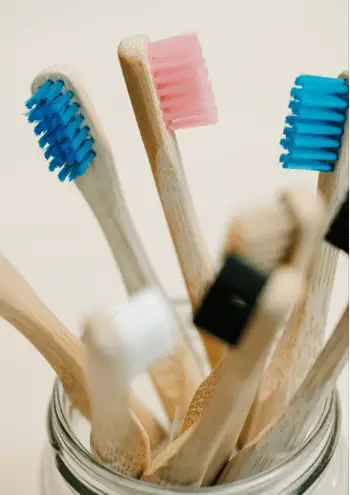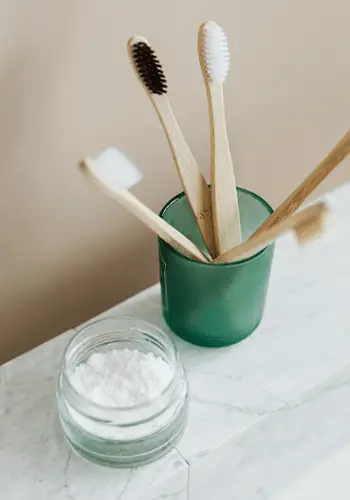The toothbrush is a daily necessity for many people around the world, but have you ever stopped to wonder when this useful tool was invented? The history of the toothbrush is actually quite interesting, so let’s see when was the toothbrush invented.
In 1780, English entrepreneur William Addis is credited with inventing the first mass-produced toothbrush. This innovative tool has since become a daily necessity for people worldwide. Addis used boar bristles and attached them to a handle made of cow bone.
In this article, we’ll explore the history of the toothbrush and learn more about its evolution over time. So, if you’re curious about the origins of the toothbrush, keep reading to find out more!
When Was the First Toothbrush Invented?

So, when was the toothbrush invented?
Ancient Egyptian and Babylonian cultures were the first to employ a tool to clean teeth, and they did so by chewing on twigs or sticks from particular trees.
These ancient toothbrushes often referred to as chew sticks, were frequently flavored with natural astringents like salt or a specific kind of plant extract.
Chinese inventors created a toothbrush in the fifteenth century that had hog bristles fastened to a handle.
In the 17th and 18th centuries, this style of toothbrush traveled to Europe and gained popularity.
However, the modern toothbrush as we know it today did not exist until the late 18th century.
William Addis, an English businessman, and a former prisoner is credited with developing the first mass-produced toothbrush in 1780.
Since then, various advancements and inventions have been made to the toothbrush, including the creation of electric toothbrushes and toothbrushes with interchangeable heads.
Electric toothbrush invention
The electric toothbrush was first invented in the early 20th century by a Colorado-based dentist, Dr. Scott H. Forbes.
However, it was not until the 1960s that the electric toothbrush became more widely available and popular.
Today, electric toothbrushes are a popular choice for many people due to their ability to effectively clean teeth and remove plaque.
Modern toothbrush
The first modern toothbrush as we know it today was invented in the late 18th century by an English entrepreneur named William Addis.
Addis, who was a former prisoner, is credited with the invention of the first modern toothbrush.
This design became the standard for toothbrushes for many years, until the invention of synthetic bristles in the 20th century.
Ancient Chinese toothbrush
The ancient Chinese are credited with inventing the first version of the ancient Chinese toothbrush as we know it today.
In the 15th century, the Chinese developed a toothbrush using hog bristles attached to a handle.
This type of toothbrush became popular in Europe in the 17th and 18th centuries and was the precursor to the modern toothbrush.
The Chinese toothbrush was made by attaching hog bristles to a handle made of bone or bamboo.
Who Invented the Toothbrush and Why?
Are you ready to brush up on your toothbrush history?
If you’re anything like me, you probably use your trusty toothbrush multiple times a day without really thinking about it.
But have you ever stopped to wonder who invented the toothbrush and why?
In the olden days, people used chew sticks (aka twigs from certain trees) to clean their teeth.
These primitive toothbrushes were often infused with natural astringents like salt or plant extracts to help freshen breath and clean teeth.
Fast forward a few centuries and the Chinese came up with the idea of using hog bristles attached to a handle to brush their teeth.
This type of toothbrush became popular in Europe in the 17th and 18th centuries.
But it wasn’t until the late 18th century that the modern toothbrush as we know it today was invented.
William Addis realized that a tool was needed to help people clean their teeth more effectively, so he created the first mass-produced toothbrush.
Where Was the Toothbrush Invented?
The toothbrush as we know it today was invented in the early 20th century, but the concept of cleaning teeth with a bristle brush dates back much further.
So where was the toothbrush invented?
Ancient civilizations used frayed twigs or bird feathers to clean their teeth, and early versions of the toothbrush were made from the bristles of hogs or other animals.
The earliest known use of a toothbrush was during the Zhou Dynasty, around 400 BC.
The first toothbrushes were made from animal hair or stiff grasses, and they were used to clean the teeth after meals.
The Chinese also used toothpicks made from bamboo shoots or pieces of bone or ivory to help remove food particles from between teeth.
Today, toothbrushes are made from a variety of materials, including nylon, plastic, and even bamboo.
They are available in a range of sizes, shapes, and bristle types to suit different needs and preferences.
The toothbrush has come a long way since its humble beginnings and is now an essential part of personal hygiene for people around the world.
What are toothbrush bristles made of?
Yes, most toothbrushes are made with nylon bristles.
Nylon is a synthetic polymer that is strong, flexible, and resistant to wear and tear, which makes it an ideal material for toothbrush bristles.
Nylon bristles are also able to hold their shape well, which allows them to effectively clean teeth and reach between teeth and along the gumline.
Some toothbrushes may also have bristles made from a combination of different materials.
Different types of toothbrush bristles are available to suit different needs and preferences, including soft, medium, and hard bristles, as well as rounded or flat-tipped bristles.
It is important to choose a toothbrush with the right type of bristles for your needs to ensure effective and comfortable cleaning.
Benefits of Toothbrush
Now that you know where and when was the toothbrush invented, let’s take a look at the benefits that it poses.
Toothbrushes are essential for maintaining good oral hygiene and preventing dental problems.
There are many benefits to using a toothbrush, including:
- Removing plaque and food particles: Plaque is a sticky film of bacteria that forms on teeth and can lead to tooth decay and gum disease. Brushing with a toothbrush helps to remove plaque and food particles from the teeth and along the gum line, reducing the risk of dental problems.
- Freshening breath: Brushing your teeth with a toothbrush can help to freshen your breath by removing odorous bacteria from your mouth.
- Promoting healthy gums: Brushing your teeth and gums with a toothbrush helps to stimulate blood flow and promote healthy gums.
- Enhancing the appearance of your teeth: Regular toothbrushing can help to remove surface stains from your teeth, giving them a brighter, more attractive appearance.
- Supporting overall health: Good oral hygiene has been linked to overall health, as poor oral health has been associated with an increased risk of certain conditions such as heart disease and diabetes.
Different Types of Toothbrushes

There is a wide variety of toothbrushes available on the market, each designed to meet specific needs and preferences.
Manual toothbrushes are the most traditional type and are made with a handle and bristles that you move back and forth to clean your teeth.
They come in a range of sizes, shapes, and bristle types to suit different needs and preferences.
Disposable toothbrushes are designed to be used once and then thrown away and may be convenient for travel or when you are on the go.
Children’s toothbrushes are designed for smaller mouths and may have softer bristles and smaller heads to make brushing more comfortable and effective for kids.
Choosing the right toothbrush depends on your individual needs and preferences.
It is important to choose a toothbrush that is comfortable to use and effectively cleans your teeth and gums.
Manual vs electric toothbrush: Which one to choose?
Both manual and electric toothbrushes can be effective at cleaning teeth and promoting good oral hygiene.
The right choice for you will depend on your individual needs and preferences.
Here are a few factors to consider when deciding between a manual and an electric toothbrush:
- Ease of use: Manual toothbrushes are easy to use and are widely available, making them a convenient choice for many people.
- Effectiveness: Some people find that electric toothbrushes are more effective at cleaning teeth and removing plaque and food particles.
- Comfort: Some people may find electric toothbrushes more comfortable to use, particularly if they have sensitivity in their teeth or gums.
- Cost: Electric toothbrushes tend to be more expensive than manual toothbrushes, both upfront and over time as the brush heads need to be replaced.
Manual
Manual toothbrushes are the most common type of toothbrush and have been around for centuries.
They consist of a handle and bristles that you move back and forth to clean your teeth.
Manual toothbrushes are widely available and come in a range of sizes, shapes, and bristle types to suit different needs and preferences.
There are several factors to consider when choosing a manual toothbrush.
The size of the toothbrush head should be appropriate for your mouth and the shape of your teeth.
Electric
Electric toothbrushes are a popular choice for many people because they are more efficient and effective at cleaning teeth and gums compared to manual toothbrushes.
They use a motor to oscillate or rotate the bristles, which helps to remove plaque and food particles from the teeth and along the gumline more effectively.
In addition to the basic cleaning function, electric toothbrushes may also have additional features.
Some of them are timers to help you brush for the recommended two minutes and pressure sensors to alert you if you are brushing too hard and potentially damaging your gums.
Sonic & Ultrasonic Toothbrushes: The Difference
Sonic and ultrasonic toothbrushes are types of electric toothbrushes that use high-frequency vibrations to clean the teeth.
Both types of toothbrushes are more effective at removing plaque and food particles from the teeth compared to manual toothbrushes, but they work in slightly different ways.
- Sonic toothbrushes use a motor to create high-frequency vibrations that produce a sonic wave. The sonic waves create a pressure wave that helps to loosen and remove plaque and food particles from the teeth and along the gumline.
- Ultrasonic toothbrushes use a piezoelectric crystal to create high-frequency ultrasonic waves. The ultrasonic waves produce microscopic bubbles that implode and create a cleaning effect on the teeth and gums.
Bristles
Toothbrush bristles come in a variety of shapes, sizes, and materials to suit different needs and preferences.
Some common types of toothbrush bristles include:
- Soft bristles: Soft bristles are ideal for people with sensitive teeth and gums, as they are gentle on the mouth and less likely to cause irritation or damage.
- Medium bristles: Medium bristles are a good all-purpose option and are suitable for most people.
- Hard bristles: Hard bristles are not recommended for regular use, as they can be too harsh on the teeth and gums and can cause damage.
What Happens When You Don’t Brush Your Teeth?
If you don’t brush your teeth regularly, it can lead to many dental health problems.
Some of the potential consequences of not brushing your teeth include:
- Tooth decay: Plaque, a sticky film of bacteria, constantly forms on your teeth. If it is not removed through brushing and flossing, it can harden into tartar, which can lead to tooth decay.
- Gum disease: Plaque and tartar can also accumulate along the gumline, leading to gum disease. Gum disease is an infection of the gums that can cause them to become inflamed and bleed easily.
- Bad breath: When bacteria accumulates on the teeth and gums, it can cause bad breath.
- Tooth loss: If tooth decay and gum disease are not treated, they can lead to tooth loss.
- Other health problems: Poor oral hygiene has been linked to several systemic health problems, such as heart disease and diabetes.
Toothbrush History Timeline
The toothbrush is a daily necessity for many people around the world, but have you ever stopped to wonder about the history of this useful tool?
The journey of the toothbrush is a fascinating one, dating back to ancient civilizations and spanning centuries of innovation and improvement.
So, here are some basic facts about toothbrush history:
- 3500 BC: Ancient civilizations in Egypt and Babylon use chew sticks, or twigs from certain trees, to clean their teeth.
- 15th century: The Chinese invented a toothbrush using hog bristles attached to a handle.
- 17th and 18th centuries: The Chinese toothbrush becomes popular in Europe.
- Late 18th century: William Addis invents the first mass-produced toothbrush using boar bristles attached to a bone or ivory handle.
- 20th century: Synthetic bristles are invented and become popular in toothbrushes.
- The 1960s: Electric toothbrushes become more widely available.
- 21st century: Toothbrushes with replaceable heads become popular, as well as toothbrushes with advanced features such as timers and pressure sensors.
What are toothbrushes made of today?
Today, toothbrushes are typically made of a combination of materials, including nylon bristles, a plastic handle, and a rubber grip.
Nylon is a synthetic polymer that is commonly used to make toothbrush bristles because it is strong, durable, and resistant to wear.
Nylon bristles are also able to effectively remove plaque and bacteria from the teeth and gums.
The handle of a toothbrush is typically made of plastic, which is lightweight and easy to grip.
Some toothbrush handles may also be made of wood or other materials.
Many toothbrushes also have a rubber grip on the handle, which helps to improve grip and make the toothbrush easier to hold.
FAQ
In this section, you can check some of the most frequently asked questions about when was the toothbrush invented.
When did humans start brushing their teeth?
The first recorded use of a tool for cleaning teeth was found in ancient Egyptian and Babylonian civilizations, where people used twigs or sticks from certain trees to chew on and clean their teeth.
How has the toothbrush affected society?
The toothbrush has had a significant impact on society by helping to improve oral hygiene and overall health.
How long do teeth last without brushing?
Without proper oral hygiene, teeth can become decayed and infected, leading to some dental health problems.
Why are my teeth yellow when I brush them every day?
There are several possible reasons why your teeth may appear yellow even if you brush them regularly.
Some common causes of yellow teeth include aging, genetics, staining foods, and beverages, and medications.
Conclusion
In conclusion, from ancient chewing sticks to the advanced toothbrushes of today, the journey of the toothbrush is a testament to the importance of oral hygiene and the continuous desire to improve upon existing tools and techniques.
I hope you enjoyed learning about the history behind and when was the toothbrush invented.
If you have any thoughts or insights on the topic, please leave a comment below. I’d love to hear from you!


